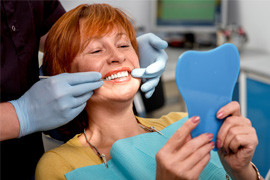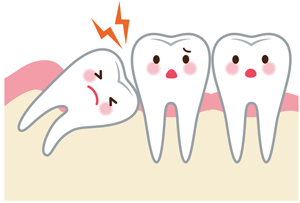When it comes to replacing lost teeth, people have a lot more options than they may think they do. Lets take a look at two of the most popular options available at the moment for replacing multiple missing teeth, partial dentures and partial bridges.
Partial Dentures:
Clinically speaking, dentures are more accurately called “removable partial dentures” or RPDs. They are a more inexpensive option when compared to the partial bridge but that doesn’t mean they are and unattractive or low quality option. With dentures, a base is molded and typically tinted to match the natural gums. Synthetic teeth are created and fit to the molded base to create the denture itself. This molded base with the teeth is designed specifically to fit over the natural gums, like a cap over your head, and to be removable. These dentures are the type that hook in place with metal brackets that grab onto the remaining natural teeth and gums. These dentures should be taken out at night to be cleaned and the natural gums that remain must also be cleaned. This is because there is a higher possibility of food particles getting under the device and potentially causing infection.
Partial Bridges:
Partial bridges – so called because they literally “bridge the gap” left behind when teeth are lost – are different because they are permanent and fixed. They are created by shaving down the tooth on either side of the gap and placing a crown over it that will be used as an anchor point for the bridge. The prosthetic device can then be safely inserted. This solution tends to be a more costly option, but is a more permanent option with less upkeep required. Partial bridges can only be removed by trained and licensed dental professionals.
What Patient Is Best For Each:
Partial dentures, or RPDs, are appropriate for patients of all ages. Aside from being a more cost effective option, many patients select them if they are not sure how many more of their teeth they will keep. Patients who may be unsure about future tooth loss could include patients with degenerative bone diseases, smokers who have begun experiencing gum recession or tooth loss, patients undergoing chemotherapy or radiation treatments, etc. For these patients, where further tooth loss is a real possibility, it may not make sense to get a partial bridge when the anchor tooth may not last.
Partial bridges are most appropriate for patients with smaller gaps and whose teeth are otherwise stable and healthy. These patients may have lost the tooth or teeth to injury or other trauma, had them extracted or maybe lost them to disease or decay that has since been resolved and is no longer a potential threat to remaining teeth.
If you are curious about your tooth replacement options, call to schedule a consultation and we will happily go over the best possible options for your unique case.




